Quantum Solidarity: Making Hajj at Bear Lodge
– Essay by Kevin James – November 28, 2018
The mind-numbing atrocities at home and abroad dare me to respond. It’s as if world events conspired to belittle me, taunting me to try to make sense of bloodbaths by religious extremists with death machines improvised or designed. Perhaps it’s this very feeling of alienation and impotence that fuels the rage behind the headlines.
A palpable sense of helplessness threatens to overcome me – it seems pointless to write, what will it accomplish? I struggle for an appropriate vantage: Muslim American; you and I, us, or We the People. But what I see as proper will no doubt conflict with countless other perspectives. That’s the real problem, locked away in our cephalic echo chamber, how do we – together and alone – replace lines in the sand that divide us?
Like unruly passengers, questions mock me as trains of thought flee the station; words board steam engines of ideas helter-skelter as the caboose of lost connections trails down the track. Solitary letters trace a past no longer existent yet constitute the currency of our sensorium emporiums in which we haggle over the meanings of this and that. Words strung together like pearls whose nacre conceals the granular irritant that produces so much wealth.
But can I heed the Quranic call to listen to the word and follow the best of it? Can I meet the demands of a religion of truth that I no longer recognize as a “religion” but as a mediating force in which the life to come continually erects a present on the ashes of what was? For now, I have begun seeing in Islam the limitless human capacity to learn as well as an innate faculty to discern compassion and mercy from cruelty and bloodlust. Delighted by these epiphanies, my faculty of Islam assumes the role of train conductor in determining where to seat its intuitions and ideas. I punch my ticket…
A View from the Bridge
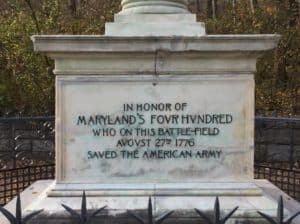
My thoughts turn to an experience from a recent anniversary of 9/11, when I chose to walk in Brooklyn’s Prospect Park rather than attend memorials. After all, it was on that morning on Lookout Hill 16 years ago where I first noticed an eerie stillness accompanied by snowflakes of ash that silently fell from the sky like so many vaporized dreams of the lives extinguished. Retracing my steps up the hill would be my memorial I reckoned, one I had since ritualized into my daily routine and preferred to face in solitude.
At the base of the stairs along the east side of the hill there’s a tribute to Maryland’s 400, a brigade that saved the American Army from British soldiers during the Revolutionary War. I reflected on the conditions that caused colonists to declare their independence from England, and how their founding ideals were transmuted from gold to lead by the lust for land and power. Beneath the world’s fetishized Qurans and Constitutions lay earth interred with the blood of countless martyrs for their cause in endless renditions of the Other.
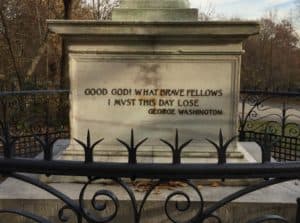
As if to highlight the theme of my walk, the sight of school children standing silently around a flag at half mast startled me as I returned home over the Ocean Parkway footbridge. A quick glance at my watch made me realize it was about the same time the first plane had struck the World Trade Center. My pace slowed as the hair on the back of my neck stood up and a shiver ran down my spine. Once again there was a hush in the air amidst a surreal suspension of time and movement; a wellspring of emotions bubbling to the surface.
These emotions took me by surprise given the length of time that had elapsed since the collapse of the Towers. I related the shiver I felt to sitting Shiva with my mom for a deceased relative in Staten Island some years ago. This memory combined with the physical sensation led me to wonder if the feeling along my back inspired the Jewish tradition for mourning loved ones. An internet search revealed the word origins for shiver and sitting Shiva were unrelated, but no matter – what I felt became indelibly linked to the Shiva of somber confrontations with death and permanent loss.
Standing in the Shoes of the Prophet

Were brain imaging available on the bridge, they would have shown my neural networks lighting up like random hits in a pinball machine. Words like “virtual,” “real,” and “actual” took shape in the cascading neural processes that predict and correct. Did I ever have a choice but to recognize synaptic patterns that evolved ages ago from successful adaptive responses?
I turned to the Quran and Prophet Muhammad to organize my thoughts, where the insight of Karl Marx prefaced yet another transformation of understanding. In The Eighteenth Brumaire, Marx pointed out that people make their own history but only from the material conditions they inherit or find themselves situated within. Simply put, there was no avoiding the fact that Muhammad was embedded in sixth century traditions and understandings when he upended the tribal arrangements of the Arabian Peninsula.
Hence, as I originate and recreate ideas from embodied experiences through the lens of social norms, so too did Muhammad. Just as my view from the Ocean Parkway footbridge would take on a different import to the Prophet – if it registered at all – his unwavering vision of the furthest horizon would be foreign to mine if I stood in his shoes.
I then realized that while Muhammad intuited kinship with other Semitic Prophets, how could he be certain that what they envisioned as divine was compatible with what inspired him? Indeed, the Prophet supplicated to be shown the facts as they were, and on numerous occasions confessed to being no more than a mortal who could neither divine the future nor determine his fate. Establishing a link to Muhammad’s humanity required removing the halo to reach the man.
Enacting a Clearing
Today’s notions of relativity and quantum physics would be alien to the Prophet, along with the empirical findings of neuroscience. Sure, we may be able to cherry pick the beginnings of transference, displacement, and projection from Quranic text, but there will always be a structural dissonance between the regions of the brain responsible for thought, feeling, and action. The Quran illustrates this dissonance as the snakes of Pharaoh’s sorcerers in their Quranic showdown with Moses, which absolute Being swallowed whole in the form of Moses’ staff. Thus we need to enact a clearing to explore the arbitrary nature of terms we create such as good, evil, and divine.
Before Muhammad donned the mantle of Prophet, he showed himself to be a profound thinker who questioned the world much as Albert Einstein or Sigmund Freud did. The late psychiatrist and Sufi Master Javad Nurbakhsh hypothesized that the Quran’s development of the self (nafs) as demanding, conflicted, and at peace foreshadowed the Id, Ego, and Superego of Freudian analysis.
To be sure, I still find a steady source of guidance from the Quran and Muhammad. Not in dated contexts foreign to my world, however, but from the courage and radical introspection Muhammad used to reorder his. Notably, the Quran initiates its call for slow, reflective readings by cautioning its audience to first seek protection from projecting self-serving meanings into the text before opening its cover. I worked to internalize this mechanism for criticism and self-criticism to the extent that reading the Quran daily became a rudimentary precursor for social activism. The negativity of no gods, only Allah, compelled me to continually seek a higher ground on which to reorient my prayer rug.
The Quran’s hierarchy of performance over passivity led me to question the notion of moderate Muslims as little more than an attempt to mollify its themes of engagement and social justice woven throughout the text. At the outset, the Quran’s Be! and it is forces us to mediate a hostile environment bereft of reference points. In light of the violence with which we are thrown into the world without our consent, how can an Islam that begins and ends in the individual be anything but radical? Must not all ideas about the world don the mantle of critical thought from its genesis in intuition, introspection, and reflection? Accordingly, like a teacher that instructs the last child in a schoolyard game of telephone, the Quran exhorts readers to ceaselessly question understandings inherited from prior generations.
Quranic retellings of Abraham and Moses’ trials and insights reveal an understanding of the divine as an open totality beyond definition. In discerning meaning from the reciprocal relation between our interior and external worlds, the Quran presents a requisite naturalism where what is actual is natural, and what is natural is actual.
What’s more, the Quran’s use of the pronouns “We” and “Us” for Allah indicate an ungendered agency that can’t be pinned down but at best is only approached by consensus. And the Quran’s call to remember the endless span of time before we came into being suggests the quantum entanglement between nihilism and meaning, a paradox that’s only actualized by one against the other at a given moment. Thus at this very moment should I continue writing because it has meaning for me that I’d like to share with others, or should I give it up as pointless in the context of my opening paragraphs since all things are perishing save the face of absolute Being? And it’s this primal attributional ambiguity between personal and cosmological time led me to the facticity of uncertainty that confronts Prophets and their subjects alike.
Imagining without Words
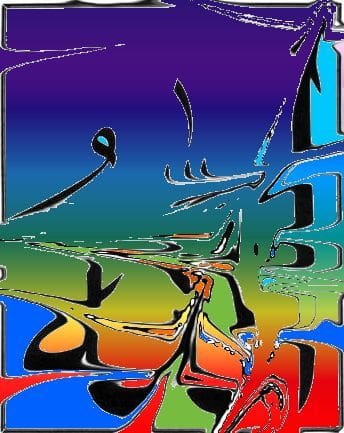
Since he was unable to read, I tried to imagine how Prophet Muhammad understood the Arabic calligraphy for Allah. Did he see it as a type of pictograph, a hieroglyph with meanings locked within? Or given the predominance of Moses’ experiences in the Quran, maybe he saw the A in Allah as Moses’ staff that swallowed whole the double L of snakes cast by Pharaoh’s sorcerers. I sought a more contemporary understanding; one that would evoke naturalism and its Tawhid of one regime rather than privileging a final vocabulary contingent on magical thinking and supernatural being.
I attempted to Photoshop the calligraphy for Allah but unfortunately art was never my forte. Looking more like a finger painting by a spider on LSD, it would probably do more to incite rather than enlighten. Then, from the comfort of my recliner, I saw what I was looking for.
It was an embroidered prayer pillow on a bookshelf that my wife Adrienne fashioned many years ago. Inspired by a verse in the Quran about birds being held aloft by Allah, she combined Arabic with motifs from the American Southwest that actualized what my digital art failed to express.
The beaded pattern consisted of four arrows pointing outward that represented to me the vertical axis of transcendence and the horizontal axis of immanence. But instead of intersecting like a cross, they ended at a circle of birds, which represented the ideas that took flight in mystic Farid ud-din Attar’s Sufi classic Conference of the Birds. The calligraphy for Allah lay at the center of the circle like the shadow of the mythological Simurgh cast unbeknownst by the birds seeking its presence when they flew in formation.

To me the diacritical mark over the double LL resembled the Greek letter psi, the mathematical symbol used to denote wave functions. It then occurred to me that calligraphy for Allah itself was a matheme, a probability wave function where the A and double LL represented a single slit diffraction pattern wherein at any given moment thought actualizes potentiality. The ox-tail bones dangling from the tassels provided me with a sobering reminder of the ephemeral, transitory nature of even our loftiest thoughts and ideals.
Adrienne was reared and remains in the Catholic faith while maintaining a healthy skepticism of all religion. Although she recently mentioned that she was careful to use certain color schemes so as not to offend, I don’t recall her giving me a detailed explanation of the pillow’s symbolism when she created it. And I’m sure she has a different take on her handiwork than mine, if not her initial sense of aesthetics as well.
Yet what struck me most of all, with my poring over texts on the subway and falling asleep with them at night, was that her flash of artistic vision intuited what took me decades to grasp. But that’s the point to good art, it evolves with our understandings, and it allows us to recognize bits of ourselves in the expressions of others and make new connections – even after living together for more than four decades.
Discerning Subjects, Enfolded Agents
Every bush burns with the truth when you finally come to appreciate what has been before you all along. But the fire of my original question remains – how do we defeat ideologies of privilege with a social solidarity informed by consensus?
In The Discerning Subject, English professor John Smith distinguishes generic subjects from activist agents. French process philosopher Giles Deleuze developed the human subject as folded with temporal surfaces laden with latent and manifest histories. And then there’s meta-phenomenologist Emmanuel Levinas, who saw the subject intimately entwined in sensible relations with other human beings prior to any consideration of natural being or the Divine.
Working through their frameworks led me to discover an affinity with Levinas, who also toiled with the Torah as I questioned the Quran. I began to see tensions between at least four folds in the layers of self-aware beings that are continually shaped by the potter’s wheel of intersubjectivity. My socially constructed identities will never fully comprehend who I am in actuality, nor will how I present myself to others fully align with how others see me.
I came to see the Quran’s emphasis on the faculty of discernment in chapter (surah) 7 as the mode for mediating our folded selves. Notably, the Quran addressed Prophet Muhammad as an enfolded subject in surah 74 early in his mission. Thus to properly emulate the Prophet required me to assess right from wrong by penetrating the context of appearances.
Making Hajj in America: A Vision Quest for Solidarity
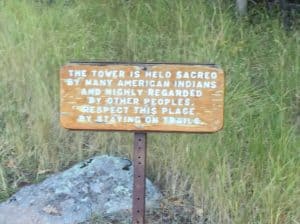
There are no quick fixes for problems that evolve and assume new shapes in social contexts perpetually in flux. Theoretical approaches are important but their retrospective character reminds me of a betrothed perpetually arriving too late for the wedding.
Tellingly, Prophet Muhammad activated followers through his authenticity and capacity to listen and speak to situations as they developed in real time. Indeed, this may prove to be one of his most important legacies as well as the most difficult to emulate. To remedy the toxic political Islam coming from Iran and Saudi Arabia that recycles mindless violence with self-fulfilling prophecy, why not enact our own vision for Hajj in America, one that pays homage to the land and labor on which this nation’s wealth was built?
–
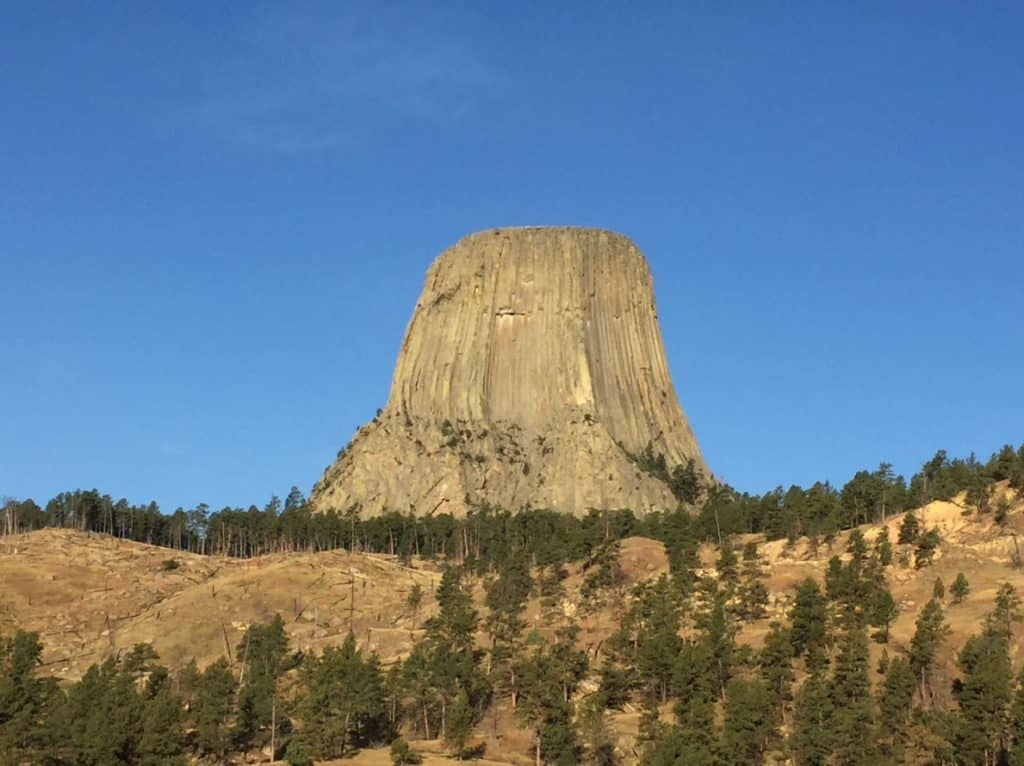
Since it’s estimated that approximately one third of African slaves were Muslim, it would be fitting to integrate Islamic practices from indigenous Africans with indigenous Americans. Just as Muhammad secluded himself in a cave outside Mecca for divine inspiration, the Lakota Sioux enact vision quests to inspire a lifelong companion in the passage to adulthood. Fasting, blood sacrifices, and the collective circling of the Kaaba during Hajj evoke the substance of sweat lodges and other tribal ceremonies performed around the circumference of Wyoming’s monolithic Bear Lodge.
Regardless of how you see yourself or others see you, making Hajj in America could become the focal point for writing a new chapter for the American narrative. This will be our story, one that confronts the challenges of the road ahead rather than resurrect the demons that trail us in the rear view mirror.
Seeing my wife’s art in a new light made me realize that mobilizing resistance to oppression requires embroidering our lives and nation’s past into a mosaic for the future. Whereas Manifest Destiny veiled its fangs in sloganeering to make America great again for the few, We the People, enfolded subjects all, must rise. We are the prophets of our destiny; only we can claim authorship for our lives. Let’s listen to the best of what’s said, focus on the furthest horizon, and make our voices heard.
–
 About the Author – Kevin James
About the Author – Kevin James
Kevin James is a former firefighter and arson investigator with the New York City Fire Department who responded to Ground Zero from home on 9/11. Mr. James participated in the Columbia University 9/11 Oral History Project and was one of several Muslim Americans profiled in the 2002 PBS documentary Muhammad: Legacy of a Prophet. He was admitted into the Revson Fellows program at Columbia University and later graduated from Columbia Law School as a Stone Scholar. *A version of this essay was originally published by The Write Launch.
–
–
Did you like this essay by Kevin James? Then you might also like “Integrative Ancestors, redux” by Gregory Stephens.